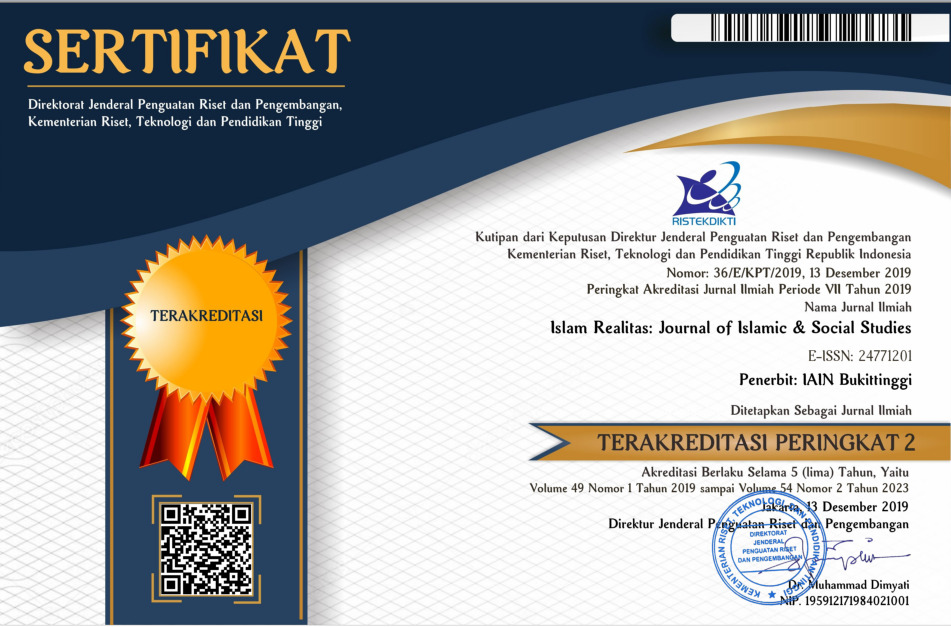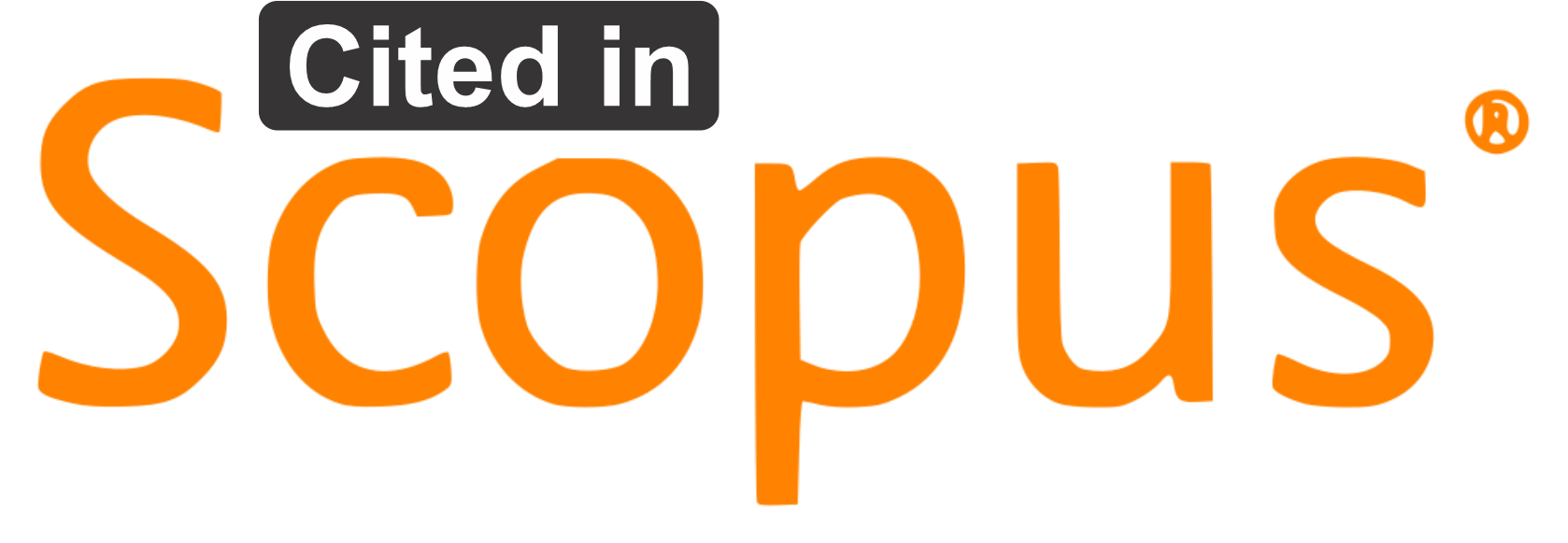Muhammadiyah Covid-19 Islamic Boarding School: A Complete Self-Isolation Model With Neurospritual and Psychosocial Approaches
Downloads
The purpose of this study was to analyze the Covid-19 Muhammadiyah Islamic boarding school with the complete independent isolation model. The subjects of this study consisted of Covid-19 patients and leaders of Covid-19 Islamic boarding schools. This research uses a qualitative approach with a case study type. This research was conducted at the Covid-19 Muhammadiyah Islamic Boarding School in Yogyakarta, which was located at the PKU Muhammadiyah Hospital in Yogyakarta. Data collection techniques using direct interviews, observation and documentation. The data analysis technique followed the Miles and Huberman model, namely data display, data reduction, and data verification. The validity of the data using triangulation. The results showed that the approach model used was complete self-isolation, on psychosocial and neurospiritual aspects. With the development of social relations on the psychosocial aspects, patients feel healthy and not stressed. As for the increase in priests and spiritual neurospiritual perspectives, it helps the immunity of Covid-19 patients to remain stable and their good deeds are better. This research has implications for Covid-19 patients in repairing and coaching related to social behavior and religious behavior during the Covid-19 period.
 Tujuan penelitian ini menganalisis pesantren Covid-19 Muhamamdiyah dengan model Isolasi mandiri paripurna. Subjek penelitian ini terdiri dari pasien Covid-19 dan pimpinan pesantren Covid-19. Penelitian ini menggunakan pendekatan kualitataif jenis studi tudi kasus. Penelitian ini dilakukan di pesanren Covid-19 Muhamamdiyah Yogyakarta yang bertempat di Rumah sakit PKU Muhammadiyah Yogyakarta. Teknik pengumpulan data menggunakan metode wawancara langusng, observasi dan dokumentasi. Teknik analisis data mengikuti model Miles dan Huberman yaitu display data, reduksi data, dan verifikasi data. Keabsahan data menggunakan triangulasi. Hasil penelitian menunjukkan bahwa model pendekatan yang diguanakn isolasi mandiri paripurna, pada aspek psikososial dan Neurospiritual. Dengan adanya pembinaan hubungan sosial pada aspek psikososial pasien merasa sehat dan tidak stress. Adapun peningkatan imam dan spiritual perpespektif neurospiritual membantu imun pasien Covid-19 tetap stabil dan lebih baik amal sholehnya. Penelitian ini berimplikasi terhadap pasien Covid-19 dalam perbaikan dan pembinaan yang berhubungan dengan prilaku sosial dan prilaku beragama di masa Covid-19.
Alexander, Rebecca, Oriana R. Aragón, Jamila Bookwala, Nicolas Cherbuin, Justine M. Gatt, Ian J. Kahrilas, and others, ‘The Neuroscience of Positive Emotions and Affect: Implications for Cultivating Happiness and Wellbeing’, Neuroscience and Biobehavioral Reviews, 121 (2021), 220–49 <https://doi.org/10.1016/j.neubiorev.2020.12.002>
Arifin, Tajul, Neni Nuraeni, Didi Mashudi, and Encang Saefudin, ‘Proteksi Diri Saat Pandemi COVID-19 Berdasarkan Hadits Shahih’, Living Islam: Journal of Islamic Discourses, 1.2 (2020), 1–15 <http://digilib.uinsgd.ac.id/30833/>
Barabas, Amanda J., Stephanie R. Dijak, Jane F. Yatcilla, Danielle N. Walker, and Brianna N. Gaskill, ‘Modulating Captive Mammalian Social Behavior: A Scoping Review on Olfactory Treatments’, Applied Animal Behaviour Science, 244.July (2021), 105489 <https://doi.org/10.1016/j.applanim.2021.105489>
Cunningham, Chinazo O., Laila Khalid, Yuting Deng, Kristine Torres-Lockhart, Mariya Masyukova, Shenell Thomas, and others, ‘A Comparison of Office-Based Buprenorphine Treatment Outcomes in Bronx Community Clinics before versus during the COVID-19 Pandemic’, Journal of Substance Abuse Treatment, August, 2021, 108641 <https://doi.org/10.1016/j.jsat.2021.108641>
Fazekas, Csilla Lea, Manon Bellardie, Bibiána Török, Eszter Sipos, Blanka Tóth, Mária Baranyi, and others, ‘Pharmacogenetic Excitation of the Median Raphe Region Affects Social and Depressive-like Behavior and Core Body Temperature in Male Mice’, Life Sciences, 286.2 (2021), 1–10 <https://doi.org/10.1016/j.lfs.2021.120037>
Hopkinson, Jane B., ‘The Psychosocial Components of Multimodal Interventions Offered to People with Cancer Cachexia: A Scoping Review’, Asia-Pacific Journal of Oncology Nursing, 8.5 (2021), 450–61 <https://doi.org/10.4103/apjon.apjon-219>
Hyo, Yukiyoshi, Shigeharu Fujieda, Atsushi Matsubara, Kazuhiko Takeuchi, Motofumi Ohki, Takeshi Shimizu, and others, ‘Survey of Nebulizer Therapy for Nasal Inflammatory Diseases in Japan before and during the COVID-19 Pandemic’, Auris Nasus Larynx, 8.xxxx (2021), 1–10 <https://doi.org/10.1016/j.anl.2021.11.007>
Ickert, Carla, Rachel Stefaniuk, and James Leask, ‘Experiences of Long-Term Care and Supportive Living Residents and Families during the COVID-19 Pandemic: “It’s a Lot Different for Us than It Is for the Average Joeâ€â€™, Geriatric Nursing, 42.6 (2021), 1547–55 <https://doi.org/10.1016/j.gerinurse.2021.10.012>
Jailani, Mohammad, Suyadi, and Dedi Djubaedi, ‘Menelusuri Jejak Otak Dan ’Aql Dalam Al-Qur’an Perspektif Neurosains Dan Pendidikan Islam Di Era Pandemi COVID-19’, Tadris: Jurnal Pendidikan Islam, 16.1 (2021), 1–19 <https://doi.org/10.19105/tjpi.v16i1.4347>
Javed, Afzal, Cheng Lee, Hazli Zakaria, Robert D. Buenaventura, Marcelo Cetkovich-Bakmas, Kalil Duailibi, and others, ‘Reducing the Stigma of Mental Health Disorders with a Focus on Low- and Middle-Income Countries’, Asian Journal of Psychiatry, 58.December 2020 (2021), 102601 <https://doi.org/10.1016/j.ajp.2021.102601>
Jeste, Dilip V, Michael L Thomas, Jinyuan Liu, Rebecca E Daly, Xin M Tu, Emily B H Treichler, and others, ‘Is Spirituality a Component of Wisdom? Study of 1,786 Adults Using Expanded San Diego Wisdom Scale (Jeste-Thomas Wisdom Index)’, Journal of Psychiatric Research, 132.9 (2021), 174–81 <https://doi.org/https://doi.org/10.1016/j.jpsychires.2020.09.033>
Johnstone, Brick, Daniel Cohen, and Andrew Dennison, ‘The Integration of Sensations and Mental Experiences into a Unified Experience: A Neuropsychological Model for the “Sense of Selfâ€â€™, Neuropsychologia, 159.June (2021) <https://doi.org/10.1016/j.neuropsychologia.2021.107939>
Kotkowski, Radoslaw, and Michal Polasik, ‘COVID-19 Pandemic Increases the Divide between Cash and Cashless Payment Users in Europe’, Economics Letters, 209.2 (2021), 110139 <https://doi.org/10.1016/j.econlet.2021.110139>
Latikka, Rita, Aki Koivula, Reetta Oksa, Nina Savela, and Atte Oksanen, Loneliness and Psychological Distress before and during the COVID-19 Pandemic: Relationships with Social Media Identity Bubbles, Social Science & Medicine (Elsevier Ltd, 2021) <https://doi.org/10.1016/j.socscimed.2021.114674>
Matracchi, Pietro, and Ali Sadeghi habibabad, ‘Prioritizing the Effect of “Light†in the Religious Places and Environments with an Emphasis on the Sense of Spirituality’, Ain Shams Engineering Journal, 13.1 (2021), 101514 <https://doi.org/10.1016/j.asej.2021.05.028>
Sigit (MCCC Muhammadiyah Yogyakarta), Interview, (Yogyakarta, 21 Februari 2021)
Muscatell, Keely A., and Tristen K. Inagaki, ‘Beyond Social Withdrawal: New Perspectives on the Effects of Inflammation on Social Behavior’, Brain, Behavior, & Immunity - Health, 16.July (2021), 100302 <https://doi.org/10.1016/j.bbih.2021.100302>
Nadiah, Syifa, Nadia Aulia Nadhirah, and Irfan Fahriza, ‘Hubungan Faktor Perkembangan Psikososial Dengan Identitas Vokasional Pada Remaja Akhir’, Quanta, 5.1 (2021), 21–29 <https://doi.org/10.22460/q.v1i1p1-10.497>
Nagy, Eszter, Maria Infantino, Nicola Bizzaro, Hristina Andreeva, Hetty J. Bontkes, Xavier Bossuyt, and others, ‘The Impact of the COVID-19 Pandemic on Autoimmune Diagnostics in Europe: A Lesson to Be Learned’, Autoimmunity Reviews, 20.August (2021) <https://doi.org/10.1016/j.autrev.2021.102985>
Ozturk, Fatma Ozlem, and Sultan Ayaz-Alkaya, ‘Internet Addiction and Psychosocial Problems among Adolescents during the COVID-19 Pandemic: A Cross-Sectional Study’, Archives of Psychiatric Nursing, 35.6 (2021), 595–601 <https://doi.org/10.1016/j.apnu.2021.08.007>
Pacheco, Emily Marie, Iwona Bisaga, Rina Suryani Oktari, Priti Parikh, and Helene Joffe, ‘Integrating Psychosocial and WASH School Interventions to Build Disaster Resilience’, International Journal of Disaster Risk Reduction, 65.August (2021), 102520 <https://doi.org/10.1016/j.ijdrr.2021.102520>
Palanca-Castan, Nicolas, Beatriz Sánchez Tajadura, and Rodrigo Cofré, ‘Towards an Interdisciplinary Framework about Intelligence’, Heliyon, 7.2 (2021), e06268 <https://doi.org/10.1016/j.heliyon.2021.e06268>
Wawali (Pasien Covid-19 OTG), Interview, (Yogyakarta, 21 Februari 2021)
Agus Taufiqurrahman (Pimpinan Pesantren Covid-19 Muhammadiyah), Interview (Yogyakarta, 21 Februari 2021)
Renov, Veronica, Lauren Risser, Rachel Berger, Tammy Hurley, Andrés Villaveces, Sarah DeGue, and others, ‘The Impact of the COVID-19 Pandemic on Child Protective Services Caseworkers and Administrators’, Child Abuse & Neglect, 3.August (2021), 105431 <https://doi.org/10.1016/j.chiabu.2021.105431>
dos Santos, Rafael Guimarães, and Jaime Eduardo Cecilio Hallak, ‘Ayahuasca, an Ancient Substance with Traditional and Contemporary Use in Neuropsychiatry and Neuroscience’, Epilepsy & Behavior, 121 (2021), 106300 <https://doi.org/https://doi.org/10.1016/j.yebeh.2019.04.053>
Schwertner, Adam, John McMenamy, and David M. Naeger, ‘Radiology Imaging Volume Changes During Discrete COVID-19 Pandemic Waves: Implications for the Delta Variant of Coronavirus and Future Pandemics’, Journal of the American College of Radiology, 3.December (2021), 20–28 <https://doi.org/10.1016/j.jacr.2021.09.045>
Smith, Meghan B., Jennifer K. Blakemore, Jacqueline R. Ho, and James A. Grifo, ‘Making It (Net)Work: A Social Network Analysis of “Fertility†in Twitter before and during the COVID-19 Pandemic’, F&S Reports, 2.4 (2021), 472–78 <https://doi.org/10.1016/j.xfre.2021.08.005>
Strojny, Julia, Gregor Domes, Urs Fischbacher, and Bernadette von Dawans, ‘The Modulation of Social Behavior and Empathy via Oral Contraceptives and Female Sex Hormones’, Psychoneuroendocrinology, 131.December 2020 (2021), 105250 <https://doi.org/10.1016/j.psyneuen.2021.105250>
Sugiyono, Metode Penelitian Kuantitatif Kualitatif Dan R&D, 1st edn (Bandung: Alfabeta, 2017)
Suyadi, Zalik Nuryana, and Niki Alma Febriana Fauzi, ‘The Fiqh of Disaster: The Mitigation of Covid-19 in the Perspective of Islamic Education-Neuroscience’, International Journal of Disaster Risk Reduction, 51.2 (2020), 101848 <https://doi.org/10.1016/j.ijdrr.2020.101848>
Suyadi, and Hendro Widodo, ‘Millennialization Of Islamic Education Based On Neuroscience In The Third Generation University In Yogyakarta Indonesia’, QIJIS: Qudus International Journal of Islamic Studies, 7.1 (2019), 173–202 <https://doi.org/DOI : 10.21043/qijis.v7i1.4922>
Vira, Emily G., and Therése Skoog, ‘Swedish Middle School Students’ Psychosocial Well-Being during the COVID-19 Pandemic: A Longitudinal Study’, SSM - Population Health, 16.August (2021), 100942 <https://doi.org/10.1016/j.ssmph.2021.100942>
Voncken, Marisol J., Corine Dijk, Felix Stöhr, Isabella J.M. Niesten, Koen Schruers, and Kim P.C. Kuypers, ‘The Effect of Intranasally Administered Oxytocin on Observed Social Behavior in Social Anxiety Disorder’, European Neuropsychopharmacology, 53.3 (2021), 25–33 <https://doi.org/10.1016/j.euroneuro.2021.07.005>
Weiner-Light, Sophia, Katherine P Rankin, Serggio Lanata, Katherine L Possin, Daniel Dohan, and Alissa Bernstein Sideman, ‘The Role of Spirituality in Conceptualizations of Health Maintenance and Healthy Aging Among Latin American Immigrants’, The American Journal of Geriatric Psychiatry, 29.11 (2021), 1079–88 <https://doi.org/https://doi.org/10.1016/j.jagp.2021.04.017>
Zhang, Zhong, Yang Zhou, Lanfang Han, Xiaoyu Guo, Zihao Wu, Jingyun Fang, and others, ‘Impacts of COVID-19 Pandemic on the Aquatic Environment Associated with Disinfection Byproducts and Pharmaceuticals’, Science of the Total Environment, 2.xxxx (2021), 151409 <https://doi.org/10.1016/j.scitotenv.2021.151409>
Authors who publish with this journal agree to the following terms:
- Authors retain copyright and grant the journal right of first publication with the work simultaneously licensed under a Creative Commons Attribution License that allows others to share the work with an acknowledgment of the work's authorship and initial publication in this journal.
- Authors are able to enter into separate, additional contractual arrangements for the non-exclusive distribution of the journal's published version of the work (e.g., post it to an institutional repository or publish it in a book), with an acknowledgment of its initial publication in this journal.
- Authors are permitted and encouraged to post their work online (e.g., in institutional repositories or on their website) prior to and during the submission process, as it can lead to productive exchanges, as well as earlier and greater citation of published work (See The Effect of Open Access).









